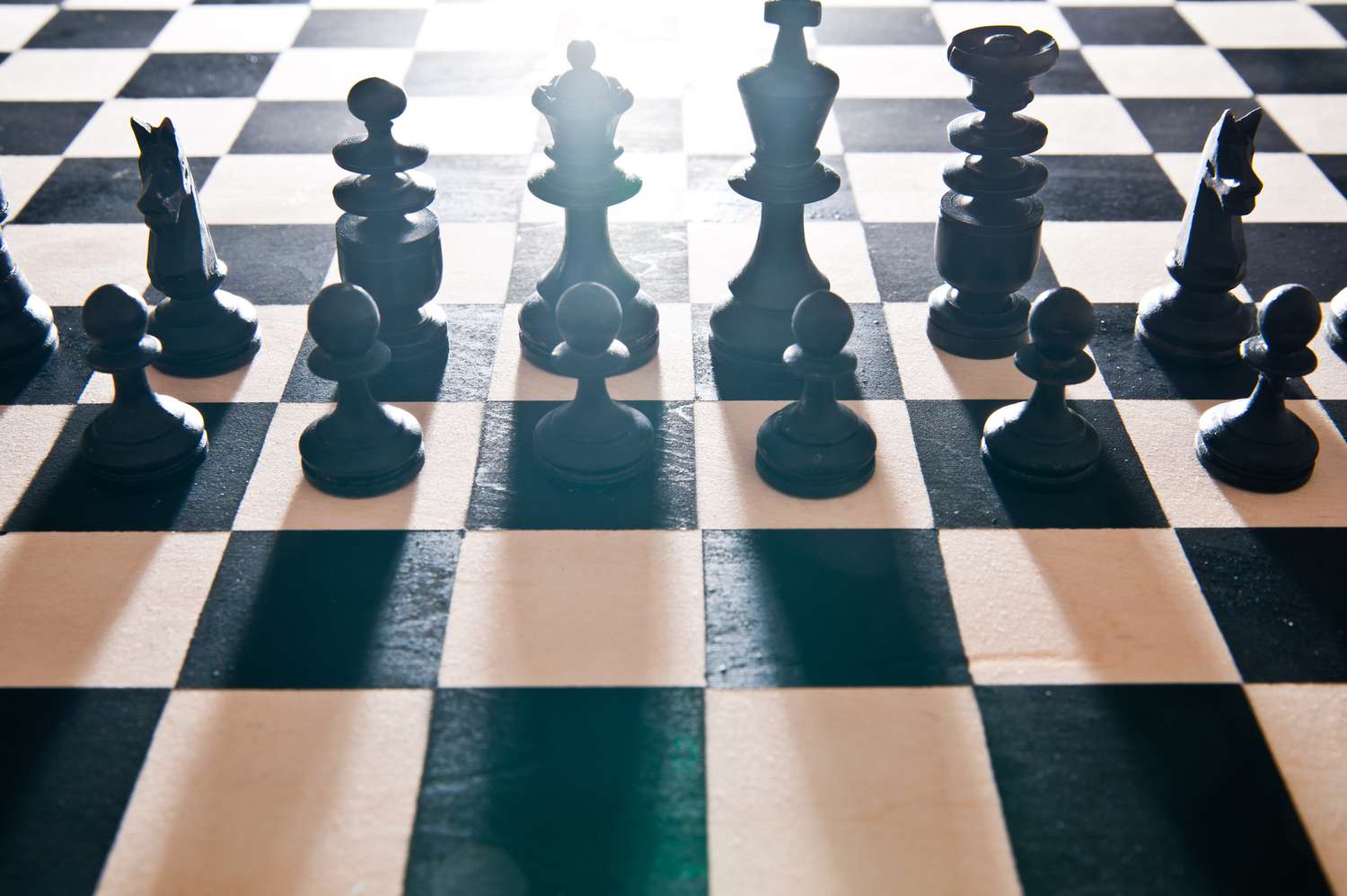AI has already surpassed human performance in chess. This milestone was reached in the late 1990s when IBM’s Deep Blue defeated the reigning world champion Garry Kasparov in a match. Since then, AI chess engines have continued to advance, becoming far more powerful than any human player. Modern chess engines, such as Stockfish and AlphaZero, consistently outperform top human grandmasters by a significant margin.
Here are a few key points on the topic:
- Deep Blue vs. Kasparov (1997): IBM’s Deep Blue defeated Garry Kasparov, marking the first time a reigning world champion lost a match to a computer under standard chess tournament time controls.
- Modern Chess Engines: Current top chess engines like Stockfish and AlphaZero have ratings far above the highest-rated human players. These engines analyze millions of positions per second and have access to vast amounts of historical game data.
- AlphaZero’s Achievement: In 2017, AlphaZero, developed by DeepMind, showcased a new approach by using reinforcement learning to teach itself chess. It defeated Stockfish, one of the strongest conventional engines, after just a few hours of self-play training.
- Impact on Human Play: The strength of AI has influenced human chess players. Many top players use these engines for preparation and analysis, leading to a higher overall standard of play. However, in direct competition, humans are no longer a match for these sophisticated programs.
In summary, AI has already beaten humans in chess and continues to set new benchmarks in the game.
The History of Chess
The origins of chess are somewhat murky and involve a mix of legend and historical facts. Chess is believed to have originated in India during the Gupta Empire around the 6th century AD. The game was called “chaturanga,” which means “four divisions of the military”—infantry, cavalry, elephants, and chariots, represented by the pieces that would evolve into the pawn, knight, bishop, and rook, respectively.
The game spread to Persia, where it was called “shatranj.” From Persia, it moved into the Islamic world and then into Europe, undergoing various changes in rules and names along the way. By the 15th century, the game had evolved into the form we recognize today as modern chess.
Because chess developed over many centuries and across various cultures, there isn’t a single inventor but rather a collective evolution of the game through different regions and historical periods.
How is Chess Played?
Chess is a complex game with a rich history and a deep strategic depth, making it a fascinating and challenging pursuit for players of all levels.
Chess is a two-player strategy game played on an 8×8 grid known as a chessboard. Each player starts with 16 pieces: one king, one queen, two rooks, two knights, two bishops, and eight pawns. The goal is to checkmate your opponent’s king, putting it in a position where it cannot escape capture. Here’s a basic overview of the rules and gameplay:
Setup
- The board is positioned with a white square at the bottom-right corner.
- Each player places their pieces on the two rows closest to them.
- The back row (closest to each player) from left to right is arranged as follows: rook, knight, bishop, queen, king, bishop, knight, rook.
- The second row is filled with pawns.
Basic Moves
- Pawn: Moves forward one square, but captures diagonally. On its first move, a pawn can move forward two squares.
- Rook: Moves horizontally or vertically any number of squares.
- Knight: Moves in an L-shape: two squares in one direction and then one square perpendicular. Knights can jump over other pieces.
- Bishop: Moves diagonally any number of squares.
- Queen: Combines the moves of a rook and a bishop, moving any number of squares horizontally, vertically, or diagonally.
- King: Moves one square in any direction. The king also has a special move called castling.
Special Moves
- Castling: The king moves two squares towards a rook on its initial square, and then the rook moves to the square over which the king crossed. This can only be done if neither the king nor the rook has moved previously, the squares between the king and rook are unoccupied, and the king is not in, moving through, or moving into check.
- En Passant: A pawn capturing another pawn that moves two squares forward from its starting position and lands adjacent to the capturing pawn. This capture must be made immediately on the next turn.
- Promotion: When a pawn reaches the opponent’s back row, it is promoted to any other piece (except a king), usually a queen.
Objective
- The objective is to checkmate the opponent’s king. Checkmate occurs when the king is in a position to be captured (in “check”) and there is no legal move to escape the threat.
Basic Rules
- Check: If a king is threatened by an opponent’s piece, it is in check. The player must make a move to remove the threat of capture.
- Checkmate: If a king is in check and cannot escape, the game is over, and the player in check loses.
- Draw: The game can end in a draw in several ways, including stalemate (no legal moves and the king is not in check), threefold repetition (the same position occurs three times with the same player to move), or insufficient material (not enough pieces to force a checkmate).
Gameplay
- Players alternate turns, with White moving first.
- Each player aims to protect their king while attempting to checkmate the opponent’s king.
- Strategic planning, piece development, and controlling the center of the board are key elements of effective play.
Endgame
- The endgame typically involves fewer pieces and focuses on promoting pawns, controlling key squares, and creating a path to checkmate the opponent’s king.
Historical Chess Legends
- Wilhelm Steinitz (1836–1900):
- The first official World Chess Champion (1886–1894) and a pioneer in the development of modern positional play.
- Emanuel Lasker (1868–1941):
- Held the World Chess Champion title for 27 years (1894–1921), the longest reign in history.
- José Raúl Capablanca (1888–1942):
- World Chess Champion from 1921 to 1927, known for his exceptional endgame skills and intuitive style.
- Alexander Alekhine (1892–1946):
- World Chess Champion from 1927 to 1935 and from 1937 until his death in 1946, noted for his attacking prowess.
Modern Greats
- Mikhail Botvinnik (1911–1995):
- World Chess Champion on several occasions between 1948 and 1963, Botvinnik was also a prominent chess theoretician and coach.
- Bobby Fischer (1943–2008):
- Became the 11th World Chess Champion in 1972 by defeating Boris Spassky, and is renowned for his deep understanding of the game and revolutionary opening preparation.
- Anatoly Karpov (1951–):
- World Chess Champion from 1975 to 1985 and FIDE World Champion from 1993 to 1999, known for his positional style and precision.
- Garry Kasparov (1963–):
- World Chess Champion from 1985 to 2000 and widely considered one of the greatest chess players of all time due to his dynamic style and deep opening preparation.
Contemporary Masters
- Viswanathan Anand (1969–):
- World Chess Champion from 2000 to 2002 and from 2007 to 2013, known for his speed and versatility in all phases of the game.
- Vladimir Kramnik (1975–):
- World Chess Champion from 2000 to 2006, he is celebrated for his classical and strategic approach.
- Magnus Carlsen (1990–):
- The reigning World Chess Champion since 2013, Carlsen is known for his universal style, endgame prowess, and record-breaking rating achievements.
These players have left an indelible mark on the history of chess through their remarkable skills, innovations, and contributions to the game’s theory and practice.
The famous match you’re referring to is likely the one between IBM’s supercomputer Deep Blue and the chess grandmaster Garry Kasparov. Here are the details of that historic event:
Deep Blue vs. Garry Kasparov
Overview
- IBM Deep Blue: A supercomputer designed specifically to play chess, utilizing parallel processing and capable of evaluating millions of positions per second.
- Garry Kasparov: At the time, he was the reigning World Chess Champion and widely regarded as one of the greatest chess players ever.
Matches
- First Match (1996)
- Location: Philadelphia, Pennsylvania, USA
- Outcome: Garry Kasparov won the six-game match with a score of 4-2. Deep Blue won the first game, marking the first time a computer defeated a reigning world champion under standard chess tournament time controls. However, Kasparov won three games and drew two, securing the overall match victory.
- Second Match (1997)
- Location: New York City, New York, USA
- Outcome: Deep Blue won the six-game rematch with a score of 3.5-2.5. This event was historic as it marked the first time a computer defeated a world champion in a match under standard chess tournament time controls. Deep Blue’s victory demonstrated significant advances in artificial intelligence and computing power.
Significance
- Technological Impact: Deep Blue’s victory in 1997 was a landmark in the field of artificial intelligence, showcasing the potential of computers to perform tasks that require strategic thinking and deep analysis.
- Chess Community: The matches spurred discussions about the role of computers in chess, leading to advancements in chess software and the increased use of computers for training and analysis.
- Public Interest: These matches captured the public’s imagination, highlighting the intersection of human intellect and machine computation.
The Deep Blue vs. Garry Kasparov matches remain a pivotal moment in both the history of chess and the development of artificial intelligence.
The Youngest Chess Player
As of my last update in 2023, the youngest World Chess Champion in history is Garry Kasparov. He won the title in 1985 at the age of 22 years and 210 days. Kasparov defeated the reigning champion Anatoly Karpov in a series of matches to become the youngest ever to achieve this feat.
There are other notable young champions in different categories:
- Youngest Grandmaster: Sergey Karjakin became the youngest grandmaster in history at the age of 12 years and 7 months in 2002.
- Youngest Women’s World Chess Champion: Hou Yifan won the Women’s World Chess Championship in 2010 at the age of 16 years, becoming the youngest female world champion.
For the most current records, it’s always a good idea to check the latest information from reliable chess organizations and databases, as new talents continue to emerge and break existing records.




